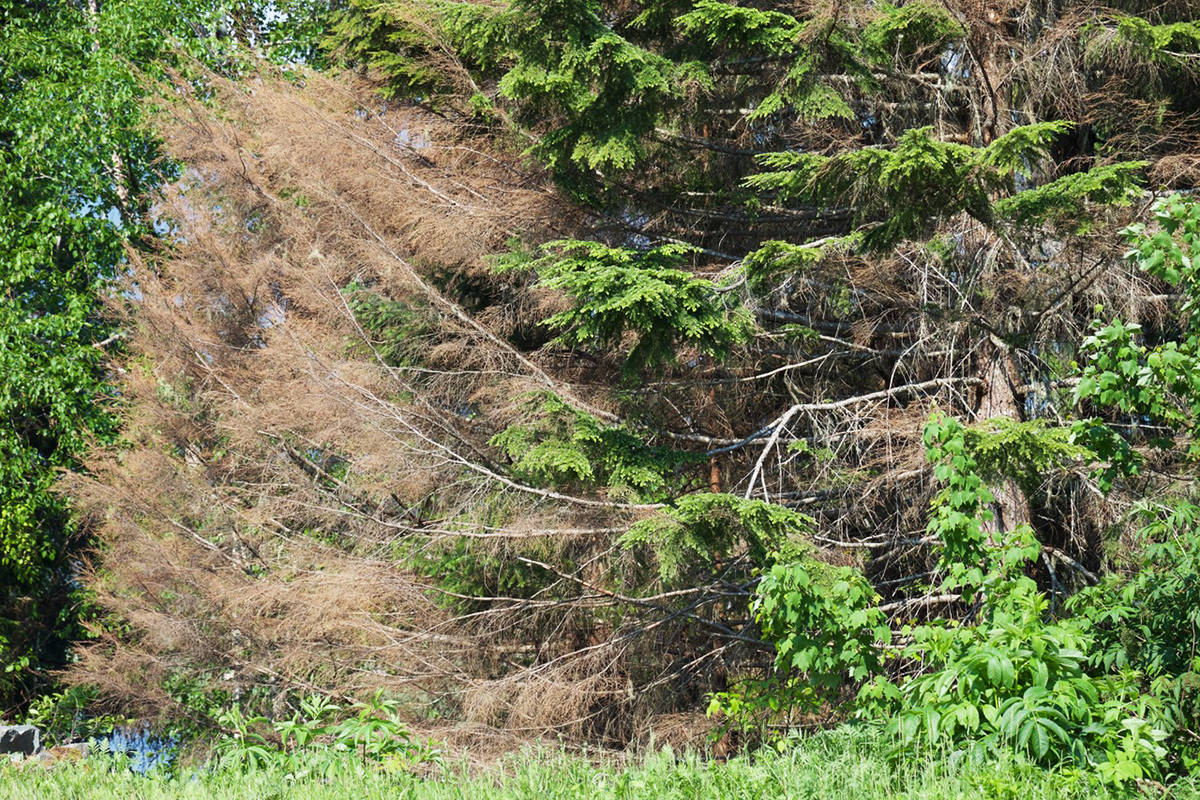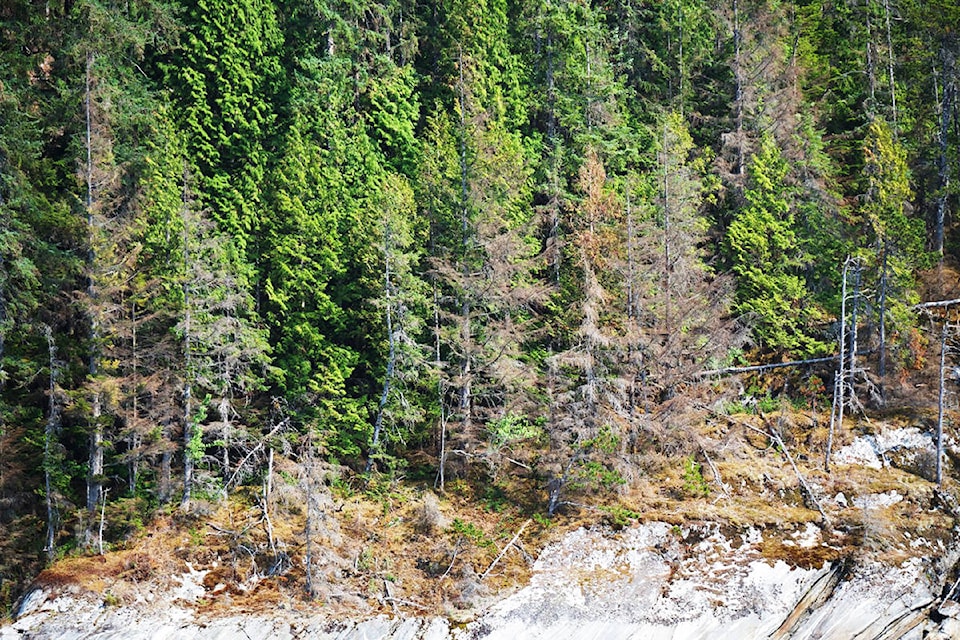Dear Editor,
I live in Kitimat and have noticed several native plant species struggling this spring.
The hemlocks were the first species I noticed struggling, starting in April. They are now dying south of Kitimat along the Douglas Channel and north past the Seven Sisters range.
The next species in trouble are salmonberry bushes with several feet of dead branches on top that leafing out from near their bases. Despite some rain in June, alder trees and elderberry bushes have also started to die. Now cedars are starting to go brown and die.
As I look back through the years, the first change I noticed was about 15 years ago when Devils Club stopped turning a beautiful soft yellow in the fall, and instead started shrivelling up and going brown.
The next noticeable change was clouds started to increasingly come from the east or west. Cirrus clouds started moving in from the northwest.
My wife doesn’t like winter, so as a letter carrier I would watch for the first cumulus clouds each spring and phone her as soon as I saw one, to lift her spirits. I stopped that tradition about six years ago because I now see cumulus clouds every month of the year.
About three years ago the alder would leaf out fully, then some would drop about a quarter of their leaves from the heat. This year those trees leafed out with about a quarter of their leaves already missing, then started to die.
The hemlock were shocking this year in that they started dying first and in noticeable numbers. A ballpark guess might be one percent, but there are a lot of hemlock in the area!
They also seem to be dying from the top down and from the bottom up, which is weird. The cedar trees are dying from their branch tips, inward towards the trunk. You can see through alder groves. We haven’t had a ‘Monsoon’ fall rainy season for years. Winters have been sunny with low snowpack and spring heat waves are long.
I was talking to a fellow last week in Kitimat who had just put in a garden. He said the first six inches of glaciomarine clay layer was dry and hard as a rock – I’ve never heard of that here before.
This year was the first year Kitimat didn’t have a ‘dog dung’ smell from bacteria in water-saturated fields as the last of winter’s snow melted away.
Could it be that those individuals in each species not genetically prepared for fall, along with winter and spring dry spells, just can’t survive? Will their deaths make room for southern species such as Douglas fir to march north?
Has there ever been such a dramatic change in our local environment in the past? How might this impact salmon and bears? Can anyone point me towards any studies being done on this issue?
Murray Minchin,
Kitimat

